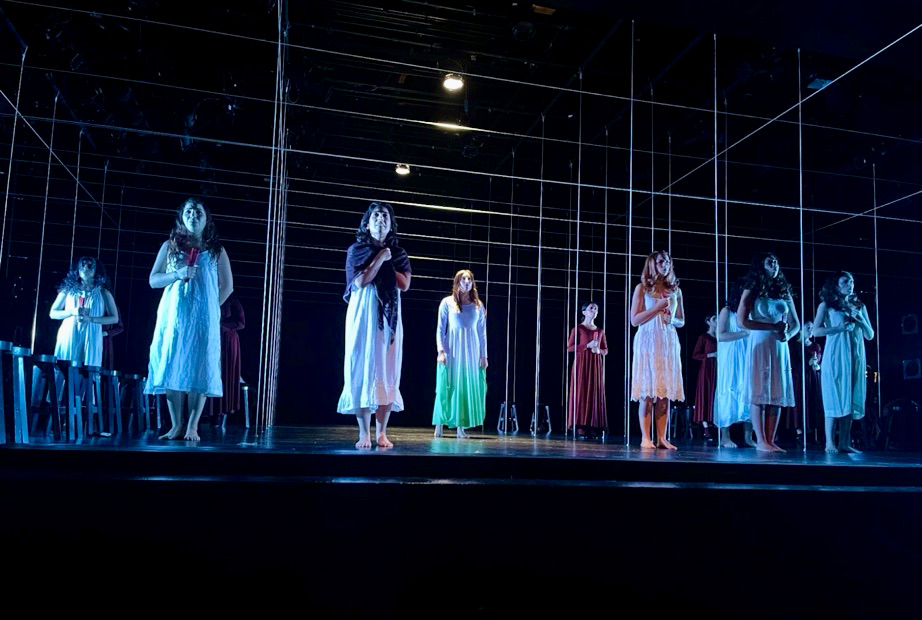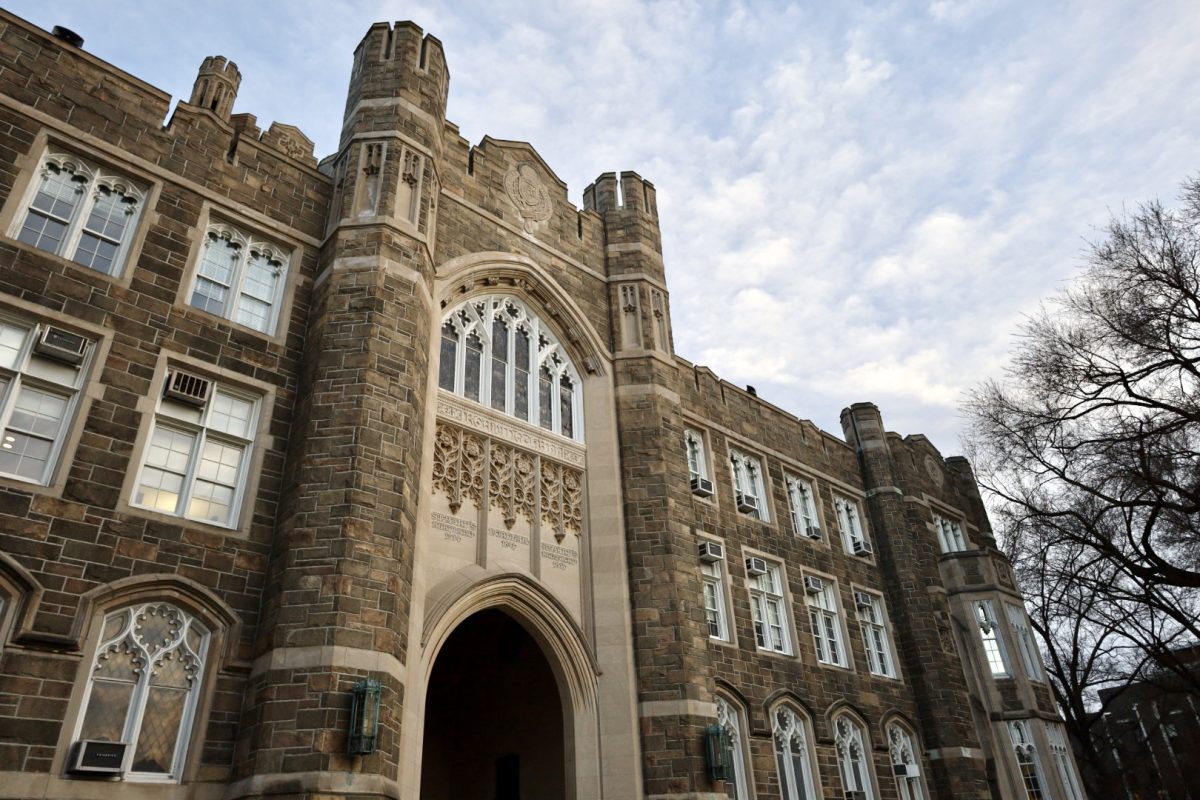An uneasy sensation sweeps through the audience as they fix their gaze on the abyss within Bernarda Alba’s abode. The Spanish villa, characterized by its minimalist, bleak and dreary landscape, is a far cry from a warm and welcoming home. A lattice structure of metal wires extends across the stage, resembling a prison or cage. The meager furnishings, featuring a sparse arrangement of toadstools, contribute to an atmosphere of desolation. The evocative scenery combines to capture the essence of the drama, illustrating the oppression in a patriarchal society and the toll of a lifetime spent in repression.
“The House of Bernarda Alba” debuted on Feb. 22 and ran for two weeks in the Pope Auditorium at Fordham University Lincoln Center. Under the artistic guidance of director Dawn Akemi Saito, known for her work with productions of “Insects in Heat,” “Suns Are Suns” and “Knock on the Sky,” the play was a breathtaking portrayal of life for women in rural Spain in the tumultuous 20th century.
“The House of Bernarda Alba” was poet and playwright Frederico García Lorca’s last piece before his death in the Spanish Civil War. It was a part of Lorca’s “Rural Trilogy,” a collection of folk tragedies that intertwine societal upheavals, religious traditions and suffering.
Set amongst the community of Andalusia located in the southeast corner of Spain, the play centers on Bernarda Alba, a recent widow, who forces her five daughters — Angustias, Magalena, Amelia, Martirio and Adela — to stay in mourning for eight years after their father’s passing. Consisting of an entirely female cast, the play highlights the profound influence of men on the decisions and actions of women.
Portrayed with chilling intensity by Valeria Fernández, FCLC ’26, Bernarda rules her household with an iron fist, wielding formidable control over her daughter’s sexuality and freedom. With each strike of her wooden cane, Fernández’s outstanding performance breathes life into Bernarda’s terrifying demeanor, sending shivers down the spines of the audience. As the play unfolds, Bernarda’s once unyielding authority over the household begins to crack under the weight of her daughter’s growing defiance. The eldest, Augustias, played by Giordana Simurdiak, FCLC ’24, engages in a secret courtship with the town’s most sought-after bachelor Pepe el Romano, despite Bernarda’s efforts to suppress any romantic relationships. As resentment simmers among her sisters towards Augustias, considered the least desirable suitor due to her advancing age and lack of allure, tensions reach a boiling point. However, when Adela, Augustia’s younger sister, is exposed for her own affair with Pepe, it ignites the smoldering embers and sets the stage for a gripping climax.
In her portrayal of Adela, Yasemin Cem, FCLC ’25, captures the character’s rebellious and naive nature, expressing an urge to break free from the shackles of her repressive household. Adela’s dance with Pepe Romano, artfully choreographed by Jess Siegal, FCLC ’25, and assistants Milagros Luis, FCLC’25, and Kana Seki, FCLC ’24, resonates with power, portraying Adela’s feelings of yearning and hysteria. Across the entire performance, interpretive dances seamlessly weave through the most climactic scenes, introducing a layer of heightened intensity. The dances function as an outlet, allowing the daughters to convey their complex feelings of sexual frustration.
Beyond the storyline and choreography, the design elements of the performance were a captivating counterpart to the show’s intensity. The costumes, crafted by designer Mariko Ohigashi and assistant Teri Salmon, emerged as a high point of the show, blending contemporary styles with conservative and traditional aesthetics. The five sisters graced the stage in black floor-length dresses, complete with full sleeves, high necklines, delicate lace and ribbon detailing.
Employing a limited range of costume colors — black, white and green — the designers used symbolism to capture the character’s intricate emotions and overarching themes. Black signified mourning and death, white represented the girls’ purity and spirituality and green became a vibrant embodiment of Adela’s aspirations and rebellion. This elegantly simple yet impactful color palette and overall style choices mirrored the daughter’s feelings of confinement and suffocation in their constrained lives.
The cast and crew of “The House of Bernarda Alba” exceeded expectations, bringing a 20th-century classic tale to Fordham with exceptional caliber. The all-around quality of production, whether it be set design, acting, costumes or dance, was executed with precision, leaving a lasting impression on audiences. Anticipation runs high among myself, along with many others, to experience their next performance, “The Wedding Gift,” as a stellar conclusion to the 2023-24 school year.









































































































































































































Renate Latimer • Nov 19, 2024 at 4:39 pm
The House of Bernarda Alba was the most memorable theater production I saw last season! Extremely professional and moving.